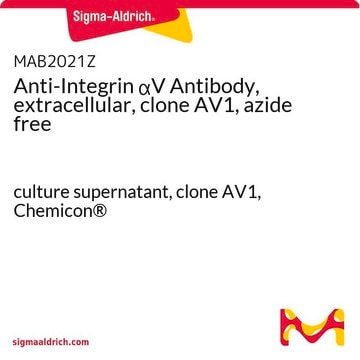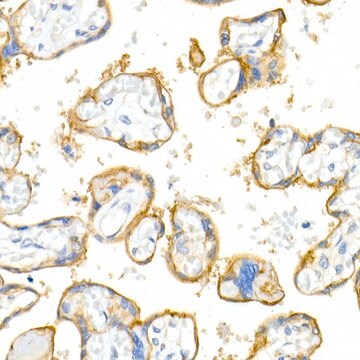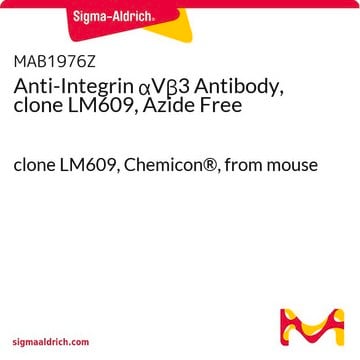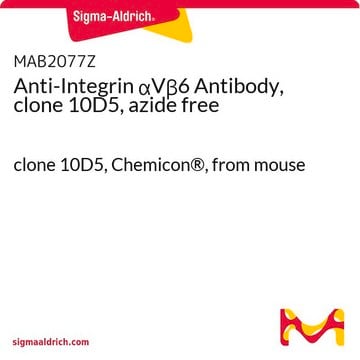AB1930
Anti-Integrin alphaV Antibody, CT, Intracellular
serum, Chemicon®
Sinonimo/i:
CD51
About This Item
Prodotti consigliati
Origine biologica
rabbit
Livello qualitativo
Forma dell’anticorpo
serum
Tipo di anticorpo
primary antibodies
Clone
polyclonal
Reattività contro le specie
chicken, hamster, horse, goat, pig, equine, mouse, human, sheep
Reattività contro le specie (prevista in base all’omologia)
rat
Produttore/marchio commerciale
Chemicon®
tecniche
ELISA: suitable
immunohistochemistry: suitable
immunoprecipitation (IP): suitable
radioimmunoassay: suitable
western blot: suitable
N° accesso NCBI
N° accesso UniProt
Condizioni di spedizione
wet ice
modifica post-traduzionali bersaglio
unmodified
Informazioni sul gene
human ... ITGAV(3685)
Descrizione generale
Specificità
Immunogeno
Applicazioni
A 1:1,000 dilution of a previous lot was used in ELISA/RIA.
Immunoprecipitation:
5 μL of a previous lot of this antibody is sufficient to precipitate alphaV/beta1 from 5x106 cells.
Immunohistochemistry:
1:1000 dilution from a previous lot was used in immunohistochemistry. (Suggested for use an acetone fixed tissue only.)
Western blot: 1:5000.
The antibody recognizes a single band at approximately 150 kDa when denatured, but not reduced (Hirsch, 1994). Under reducing conditions this antibody recognizes two major bands of 25 and 27 kDa and, to a lesser extent, the full length 150 kDa band.
Optimal working dilutions must be determined by end user.
Cell Structure
Integrins
Qualità
Western Blot Analysis: 1:500 dilution of this lot detected INTEGRIN AV light chain on 10 μg of C6 lysates.
Descrizione del bersaglio
Stato fisico
Stoccaggio e stabilità
Handling Recommendations:
Upon receipt, and prior to removing the cap, centrifuge the vial and gently mix the solution. Aliquot into microcentrifuge tubes and store at -20°C. Avoid repeated freeze/thaw cycles, which may damage IgG and affect product performance.
Risultati analitici
HT-29 colon carcinoma cells
C6 lysates.
Altre note
Note legali
Esclusione di responsabilità
Not finding the right product?
Try our Motore di ricerca dei prodotti.
Raccomandato
Codice della classe di stoccaggio
10 - Combustible liquids
Classe di pericolosità dell'acqua (WGK)
WGK 1
Certificati d'analisi (COA)
Cerca il Certificati d'analisi (COA) digitando il numero di lotto/batch corrispondente. I numeri di lotto o di batch sono stampati sull'etichetta dei prodotti dopo la parola ‘Lotto’ o ‘Batch’.
Possiedi già questo prodotto?
I documenti relativi ai prodotti acquistati recentemente sono disponibili nell’Archivio dei documenti.
Il team dei nostri ricercatori vanta grande esperienza in tutte le aree della ricerca quali Life Science, scienza dei materiali, sintesi chimica, cromatografia, discipline analitiche, ecc..
Contatta l'Assistenza Tecnica.








